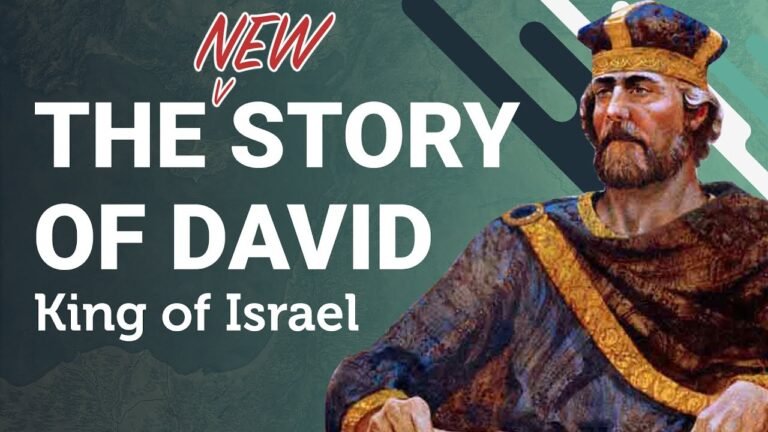Exploring the Giants of the Bible: Myths and Realities
Throughout the pages of the Bible, the presence of giants captivates the imagination and stirs intrigue. These formidable beings, often representing immense strength and power, appear in various stories and contexts, leaving a lasting impact on biblical narratives. From the towering figure of Goliath to the enigmatic Nephilim, the giants in the Bible serve as symbols of both physical might and spiritual challenges. As we delve into their fascinating roles and the lessons they impart, we uncover the deeper meanings behind these colossal figures and their significance in the overarching biblical story.
What does the Bible mention regarding giants?
The Bible references giants in Genesis 6:4, describing a time when these formidable beings roamed the earth. It notes that these giants emerged when the sons of God interacted with the daughters of men, resulting in the birth of mighty warriors who became renowned figures in ancient history. This intriguing passage highlights the blend of divine and human elements, suggesting a world where extraordinary beings walked among mortals, leaving a lasting legacy that shaped the narratives of the past.
What is the number of giants killed in the Bible?
In the biblical narrative, four giants met their demise, showcasing the valor of David and his loyal servants. These encounters highlight not only David’s bravery but also the power of teamwork and faith in overcoming seemingly insurmountable challenges. Each giant’s defeat serves as a testament to the strength that can emerge from unity and shared purpose, reinforcing the idea that great victories are often collective efforts.
Moreover, the story emphasizes that God equips individuals for greatness, raising up numerous champions in the face of adversity. David’s leadership exemplifies how one person’s courage can inspire and empower others to take on their own giants. This enduring message instills hope and encourages believers to recognize their potential in confronting life’s challenges, knowing that they are part of a larger story of triumph over darkness.
What is Enoch’s perspective on the giants?
Enoch, a pivotal figure in ancient texts, conveyed a powerful message to the giants of his time. He warned them of impending doom, declaring that the earth would face destruction either by fire or by water. This prophecy highlighted the seriousness of their actions and the consequences that awaited them, emphasizing a divine judgment that loomed over their existence.
While delivering this grave warning, Enoch engaged in an act of preservation and reflection. He devoted his time to documenting the mighty works of God, meticulously inscribing these accounts on marble tablets and bricks. This dedication to recording history served not only as a testament to divine power but also as a decisivo reminder for future generations of the lessons learned from the past.
In this dual role as a prophet and scribe, Enoch’s actions underscore the importance of accountability and the quest for knowledge. His writings offered insight into the divine narrative and the moral imperatives that accompany human life. Through his efforts, Enoch sought to bridge the gap between the giants’ reckless behavior and the righteous path, urging all to recognize the gravity of their choices in the face of impending judgment.
Unveiling the Truth Behind Biblical Behemoths
Throughout history, the biblical behemoth has sparked curiosity and debate among scholars, theologians, and enthusiasts alike. Described in the Book of Job as a colossal creature, its portrayal raises questions about its existence and significance within the biblical narrative. Some interpret the behemoth as a metaphor for God’s power and creation, while others speculate about its potential ties to real-life prehistoric animals, such as dinosaurs or large mammals. This duality invites a deeper exploration into the symbolic meanings behind ancient texts and the cultural context in which they were written.
As we delve into the enigma of the behemoth, we uncover layers of interpretation that extend beyond mere physicality. Its representation challenges us to consider the relationship between humanity and the natural world, prompting reflections on our own place within creation. By examining the behemoth through various lenses—historical, literary, and theological—we not only gain insights into ancient beliefs but also enrich our understanding of contemporary issues concerning biodiversity and environmental stewardship. Ultimately, the behemoth serves as a powerful reminder of the mysteries of existence that continue to inspire awe and inquiry today.
From Legends to Lessons: Understanding Giant Narratives
Throughout history, giant narratives have shaped our understanding of culture, morality, and human experience, weaving tales that transcend time and geography. From the epic stories of ancient heroes to modern myths, these narratives offer profound lessons about resilience, courage, and the complexity of the human condition. By examining these larger-than-life figures and their journeys, we gain insight into our own struggles and aspirations, discovering that the lessons embedded in these stories are not just relics of the past but powerful guides for navigating the challenges of today. Ultimately, the giants of our narratives remind us that while their tales may be grand, the truths they convey are deeply personal and universally relevant.
The Intersection of Faith and Folklore in Scripture
Throughout history, the intertwining of faith and folklore has shaped the narratives found within scripture, revealing profound truths and moral lessons through vivid storytelling. These tales, often steeped in cultural traditions, serve as a bridge between the divine and the everyday, illustrating how spiritual beliefs can manifest in the lives of ordinary people. From parables that convey ethical teachings to myths that explain the cosmos, the rich tapestry of folklore enriches the understanding of faith, inviting believers to explore deeper meanings.
Scriptural stories frequently draw upon the familiar elements of folklore, employing symbols, archetypes, and characters that resonate across generations. This connection not only validates the experiences of a community but also reinforces the moral frameworks that guide their lives. By embedding spiritual principles within accessible narratives, scripture transforms abstract beliefs into relatable experiences, allowing individuals to find solace and guidance in their faith while honoring their cultural heritage.
As we delve into these narratives, we uncover a dynamic interplay where faith informs folklore, and folklore, in turn, enriches faith. This symbiotic relationship invites believers to engage with their spiritual heritage in meaningful ways, fostering a sense of belonging and continuity. Ultimately, the intersection of faith and folklore in scripture serves as a testament to the enduring power of storytelling, reminding us that our beliefs are often best understood through the stories we tell and the traditions we uphold.
Discovering the Historical Context of Biblical Giants
Throughout history, the concept of giants has captivated the human imagination, particularly within the biblical narrative. These towering figures, often depicted as both fearsome and formidable, serve as symbols of the struggle between good and evil. Rooted in ancient Near Eastern mythology, the stories of giants like Goliath and the Nephilim reveal deeper cultural anxieties about power, divine justice, and the fragility of humanity. By examining these narratives, we can gain insight into the social and moral landscapes of the times in which they were written.
The historical context surrounding these biblical giants reflects a world where physical prowess and divine favor were intertwined. Giants were not merely oversized beings but representatives of the challenges faced by the Israelites. Their stories often illustrate the tension between the oppressed and their oppressors, highlighting the courage required to confront seemingly insurmountable odds. This dynamic resonates across generations, making these ancient tales relevant to contemporary discussions about inequality and resilience.
As we delve deeper into the origins and implications of these giants, we uncover the ways in which they shaped the identity of ancient communities. The narratives surrounding them served as cautionary tales, urging societies to reflect on their values and actions. By understanding the historical context of biblical giants, we enrich our appreciation of these stories and their enduring legacy, reminding us that even the mightiest can fall in the face of faith and determination.
The giants in the Bible serve as a captivating reminder of the interplay between myth and history, challenging our understanding of ancient narratives. Their stories provoke curiosity and invite deeper exploration into the cultural and theological contexts of the time. By examining these towering figures, we gain not only insight into biblical lore but also a reflection of humanity’s enduring fascination with the extraordinary.







